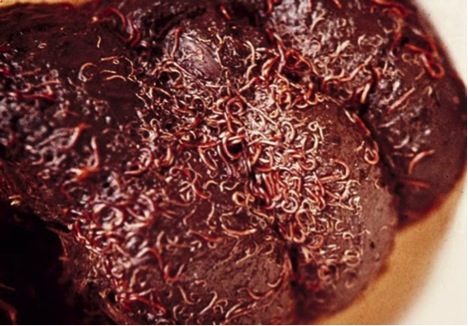Small Strongyles
(Cyathostomes)
Small Strongyles are the most common equine worm, and the adult worms alone cause little ill effect.
It is the hypobiotic larvae emerging from gut wall which cause disease. Once ingested, the small larvae have the ability to burrow into the lining of the intestine. When they emerge, they can do so in very large numbers, causing severe intestinal damage and diarrhoea.
Treatment using ivermectins can control the adult and immature stages of this parasite and will minimise the numbers eggs being shed onto the pasture. The larvae are difficult to treat and resistance to wormers is a major issue. Pasture sweeping, wormer rotation, FECRTs and paddock rotation are all good ways to minimise risk.
The Typical Life Cycle of Small Strongyles
- The horse ingests grass which has stage L3 larvae on it.
- The larvae enter the large intestinal mucosa. There it either undergoes hypobiosis (similar to hibernation) and emerges as L4 later or immediately emerge as L4. There is a high damage risk of large numbers of encysted L4 emerging from mucosa at same time
- The L4 larvae develop and lay eggs
- These eggs pass out in faeces
- The eggs on the faeces develop first into L1, then into L2 and finally into L3 larvae
- The larvae move onto the grass
- The horse ingests grass and the cycle starts again





